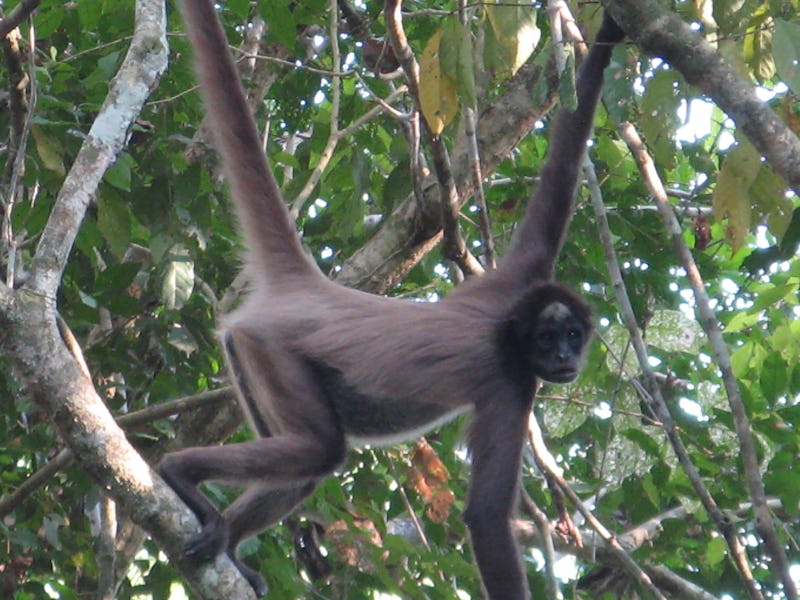The Future Will Be Monkey-less, Warn Scientists
But it might not be too late.

Many of the world’s primates could go extinct in the next 25-50 years, according to an expansive global survey authored by 31 primatologists. The report, released Wednesday in Science Advances, finds that 60 percent of primate species are threatened with extinction and that 75 percent have declining populations. Within our lifetimes, these animals will all but disappear — unless urgent action is taken to reverse the trend.
It’s a very poor reflection on humanity that our activities on this planet have caused such enormous harm to our closest cousins. But if there’s good news, it’s that the solution to saving the apes involves helping people, too.
“Although the focus in the article is primates, what we’re really talking about is tropical forests, because the large majority of primates are tropical forest dwellers,” Anthony Rylands with Conservation International, and one of the authors of the report, tells Inverse. “What needs to be saved is their habitat — the tropical forests. Not just for the primates, but for all the wildlife there.”
And conserving forests is good for humans, too. Healthy forests protect clean water and fertile soils, mitigating against the effects of climate change by pulling carbon dioxide out of the air and providing resources and sustainable economies to local communities. Cutting forests down is a quicker way to make a buck, but ultimately paves the way for erosion of the land and degradation of the soil, until it’s not good for much.
In the list of priorities to address the conservation problem, the authors name “improving the human condition” first. Because it’s in the context of ballooning populations, a lack of economic opportunity, and poor governance that pressures on ecosystems are strongest. “Solutions to the challenge of primate conservation must include reducing human birth rates and population growth, improving health, reducing poverty and gender biases in education, developing sustainable land-use initiatives, and preserving traditional livelihoods,” the report states.
Save the forests, save the monkeys: The solution is that simple, but getting there requires challenging the very fundamentals of globalization and industrial capitalism. “The ultimate causes of the devastation of their habitats and the extinction of these species are massive global economic, commercial forces — for agriculture, for mining, for cattle breeding and all this sort of thing,” says Rylands. “It is difficult to reserve massive trends, with such heavy pressure for profit, greed, consumption, and so on, at all levels.”
A mother gorilla holds four-month-old Kabila, named for the president of the Democratic Republic of the Congo.
Fast forward 25 years in the future, and Rylands predicts both progress and devastation. “There will be many successes, on local and regional scales, for many of these species. But overall, you can see that there’s going to be a lot of species probably becoming extinct because they’re already so diminished.”
By current count, there are more than 500 species of primates, including tarsiers, lemurs, lorises, monkeys, and gibbons. But it’s our own branch of the tree, the great apes — a grouping that includes gorillas, bonobos, and chimpanzees — that is in the worst shape. Apart from Homo sapiens, every hominid species on Earth is threatened with extinction.
“They’re in trouble despite enormous amounts of money devoted to their conservation and to their protection,” says Rylands. “But market forces, global demands, cutting down forests — it’s implacable, it’s relentless, it just goes on and on. Governments have got to start sorting out what they want to lose, and if they’re going to be prepared to have miserable, unhealthy ecosystems.”